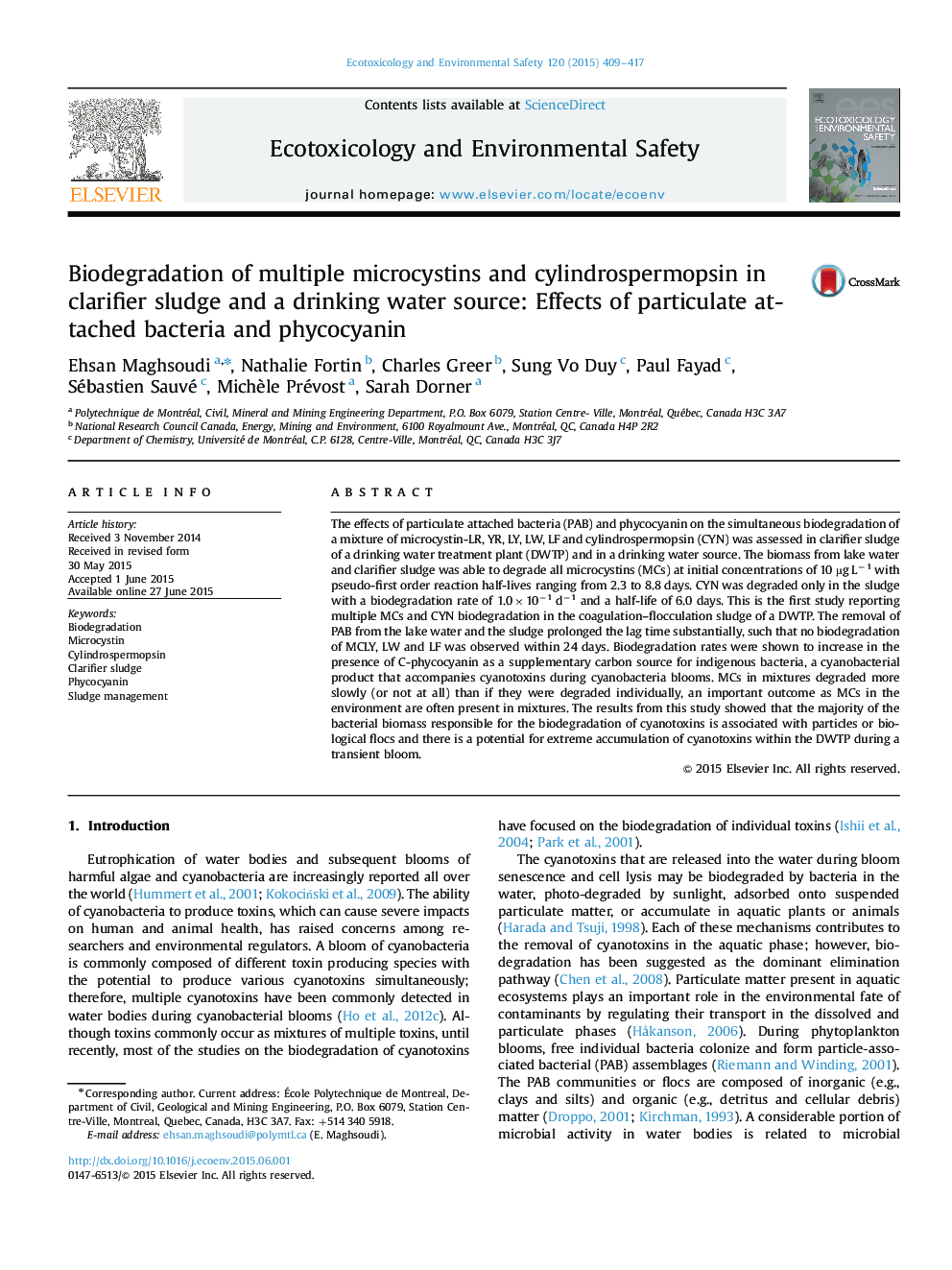| کد مقاله | کد نشریه | سال انتشار | مقاله انگلیسی | نسخه تمام متن |
|---|---|---|---|---|
| 4419400 | 1618943 | 2015 | 9 صفحه PDF | دانلود رایگان |
• Particulate attached bacteria were mainly responsible for cyanotoxins degradation.
• Microcystins were degraded more slowly in mixtures as compared to individual toxins.
• Phycocyanin has positive effect on the biodegradation of microcystins.
• Clarifier sludge retention time needs to be reduced during cyanobacterial bloom.
The effects of particulate attached bacteria (PAB) and phycocyanin on the simultaneous biodegradation of a mixture of microcystin-LR, YR, LY, LW, LF and cylindrospermopsin (CYN) was assessed in clarifier sludge of a drinking water treatment plant (DWTP) and in a drinking water source. The biomass from lake water and clarifier sludge was able to degrade all microcystins (MCs) at initial concentrations of 10 µg L−1 with pseudo-first order reaction half-lives ranging from 2.3 to 8.8 days. CYN was degraded only in the sludge with a biodegradation rate of 1.0×10−1 d−1 and a half-life of 6.0 days. This is the first study reporting multiple MCs and CYN biodegradation in the coagulation–flocculation sludge of a DWTP. The removal of PAB from the lake water and the sludge prolonged the lag time substantially, such that no biodegradation of MCLY, LW and LF was observed within 24 days. Biodegradation rates were shown to increase in the presence of C-phycocyanin as a supplementary carbon source for indigenous bacteria, a cyanobacterial product that accompanies cyanotoxins during cyanobacteria blooms. MCs in mixtures degraded more slowly (or not at all) than if they were degraded individually, an important outcome as MCs in the environment are often present in mixtures. The results from this study showed that the majority of the bacterial biomass responsible for the biodegradation of cyanotoxins is associated with particles or biological flocs and there is a potential for extreme accumulation of cyanotoxins within the DWTP during a transient bloom.
Journal: Ecotoxicology and Environmental Safety - Volume 120, October 2015, Pages 409–417
